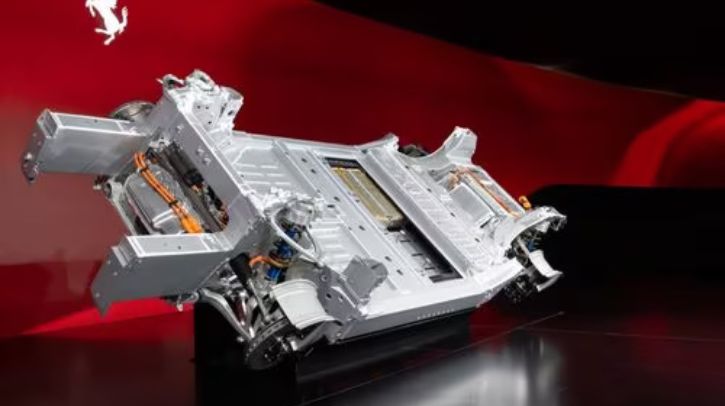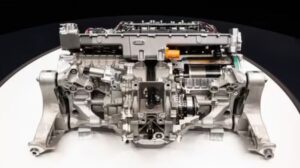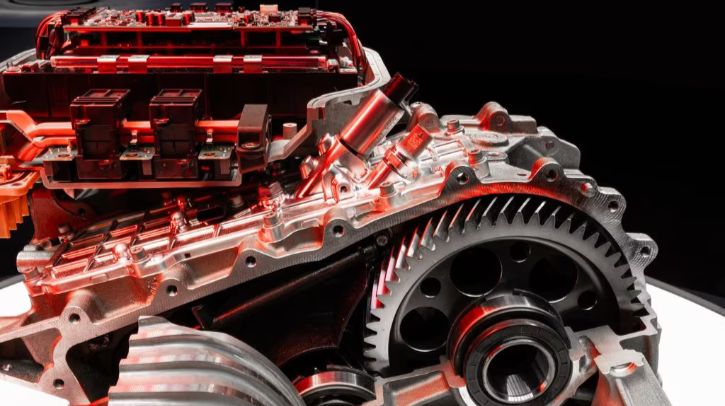Ferrari has revealed the production-ready chassis and components of its new electric car, the first full-electric model in its history. The Elettrica is the culmination of technological research into electrification that began with the first hybrid solutions derived from Ferrari’s 2009 Formula 1 car and boasts over 60 patented proprietary technological solutions.

The architecture features short overhangs, an advanced driving position close to the front axle, and a battery integrated completely into the floorpan. The modules are installed between the front and rear axles, with 85% of them concentrated in the lowest position possible to lower the center of gravity and benefit driving dynamics. The Elettrica has a center of gravity 80mm lower than the equivalent ICE model.
The front and rear axles each comprise two independent electric engines, which work in concert to enable torque vectoring and improve the car’s dynamic behavior. Each axle has a pair of synchronous permanent magnet engines and Halbach array rotors derived from F1 technology and industrialized for a series production application.
The front axle has a power density of 3.23kW/kg and an efficiency of 93% at peak power, while the rear axle attains a power density of 4.8kW/kg and the same peak efficiency. Capable of delivering up to 300kW, the front inverter is fully integrated into the axle and weighs 9kg.
High rotational speeds – 25,500rpm at the rear and 30,000rpm at the front – enable these engines to deliver a peak power of 310kW and 105kW respectively, but with compact dimensions enabling a space-saving axle architecture.
The battery has an energy density of almost 195Wh/kg. The heart of this system is the Ferrari Power Pack (FPP), an integrated power module containing all the components needed for very high-performance power conversion in an extremely compact package: namely, six modules in silicon carbide (SiC), gate driver boards and an integrated cooling system. The battery is designed to be removable and repairable if needed.

One of the project’s key innovations is toggling, a specific strategy used for the rear axle which periodically switches the inverter between on and standby states so that it works at the optimal operating points to improve overall efficiency without compromising its ability to fulfil the torque request received from the driver.
The three driving modes available – Range, Tour and Performance – determine how energy, available power and traction are managed. The paddles behind the steering wheel let the driver access five progressively higher levels of torque and power delivery to offer a sensation of gradual acceleration and involvement.
The unveiling of the new electric Ferrari will continue in early 2026 with a preview of the look-and-feel of the interior design concepts, with the technology and design reveal following in the spring.
In related news, Vittori unveils hybrid hypercar, designed in collaboration with Pininfarina


